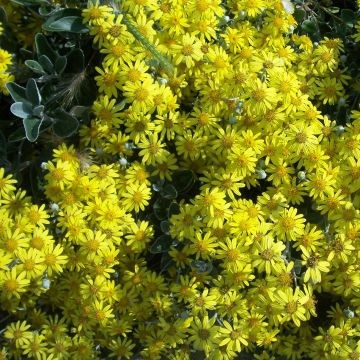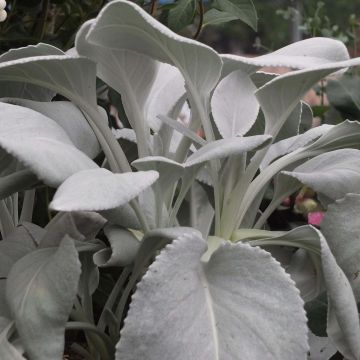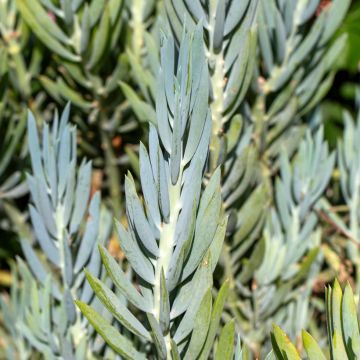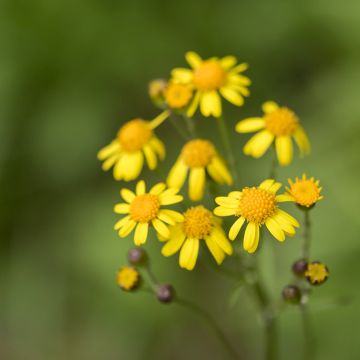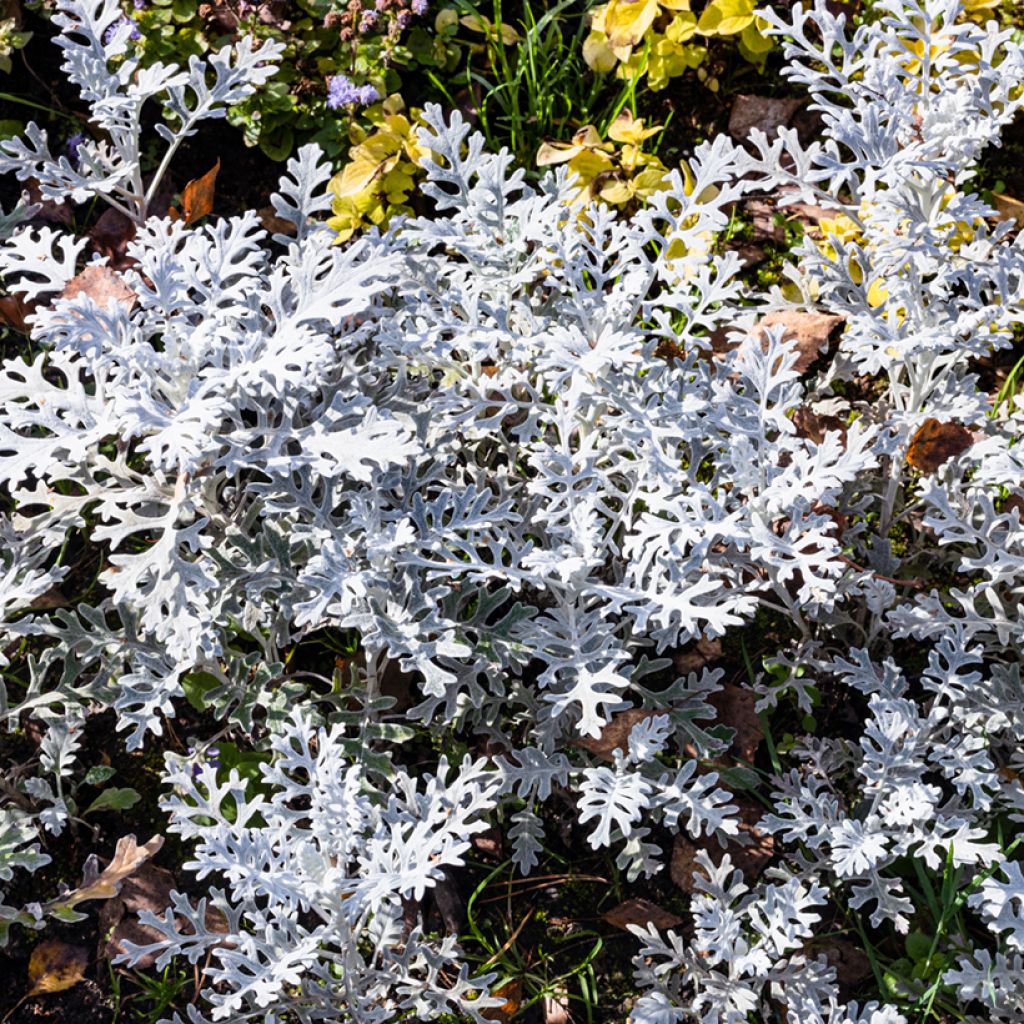

Senecio cineraria Silver Dust
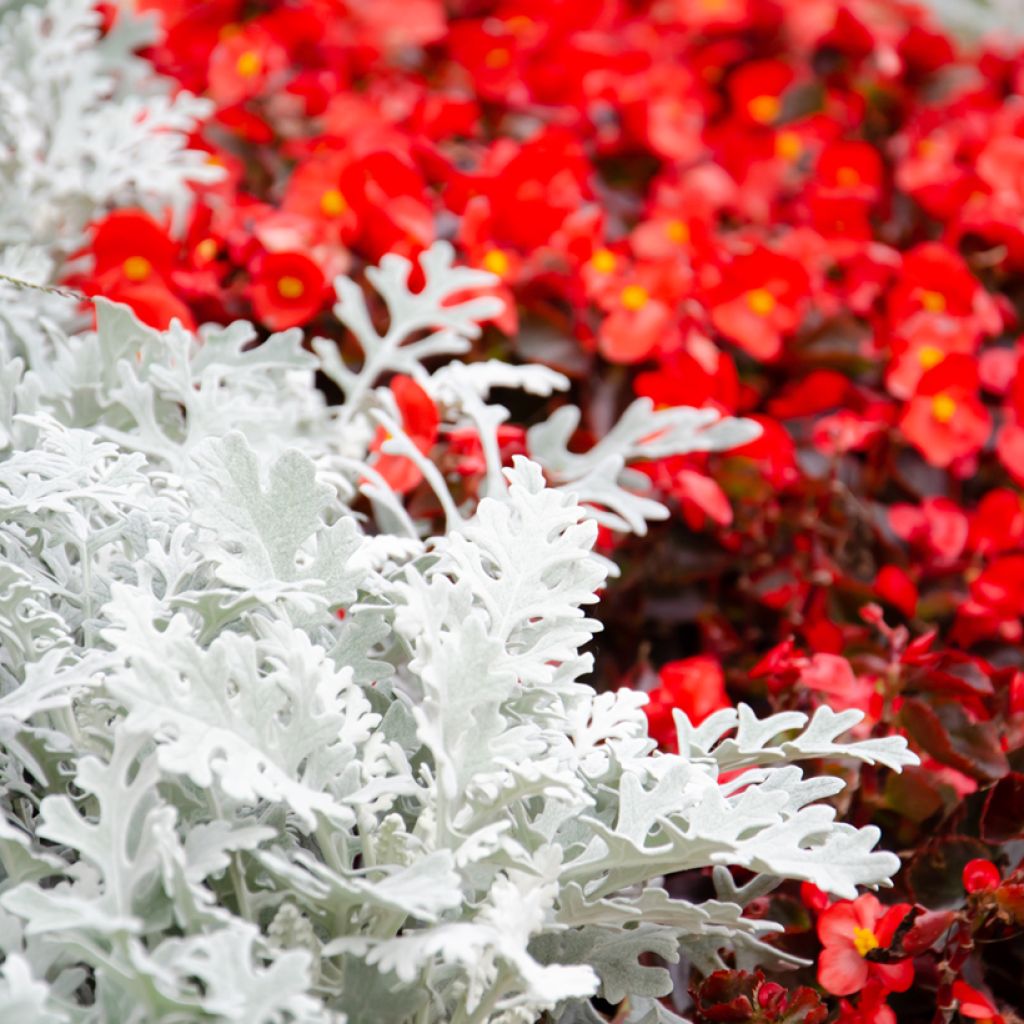

Senecio cineraria Silver Dust
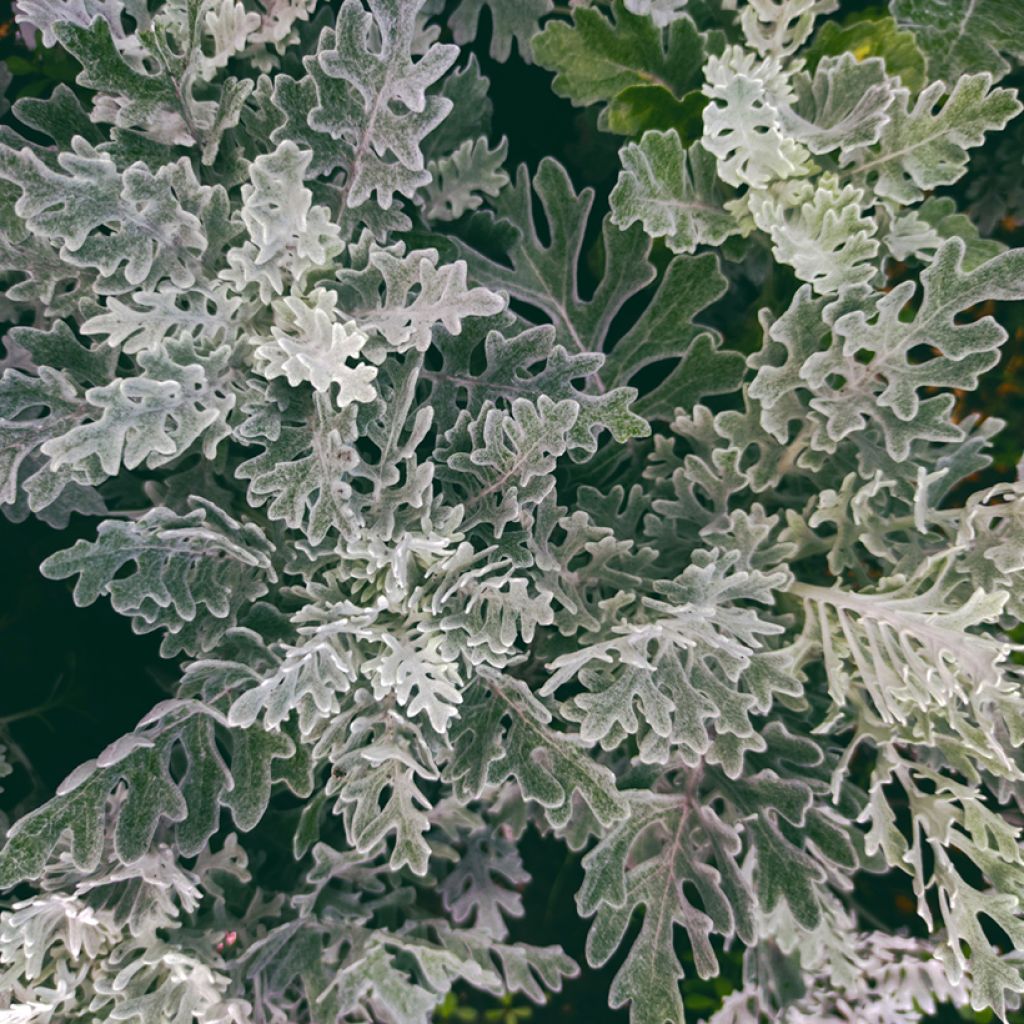

Senecio cineraria Silver Dust
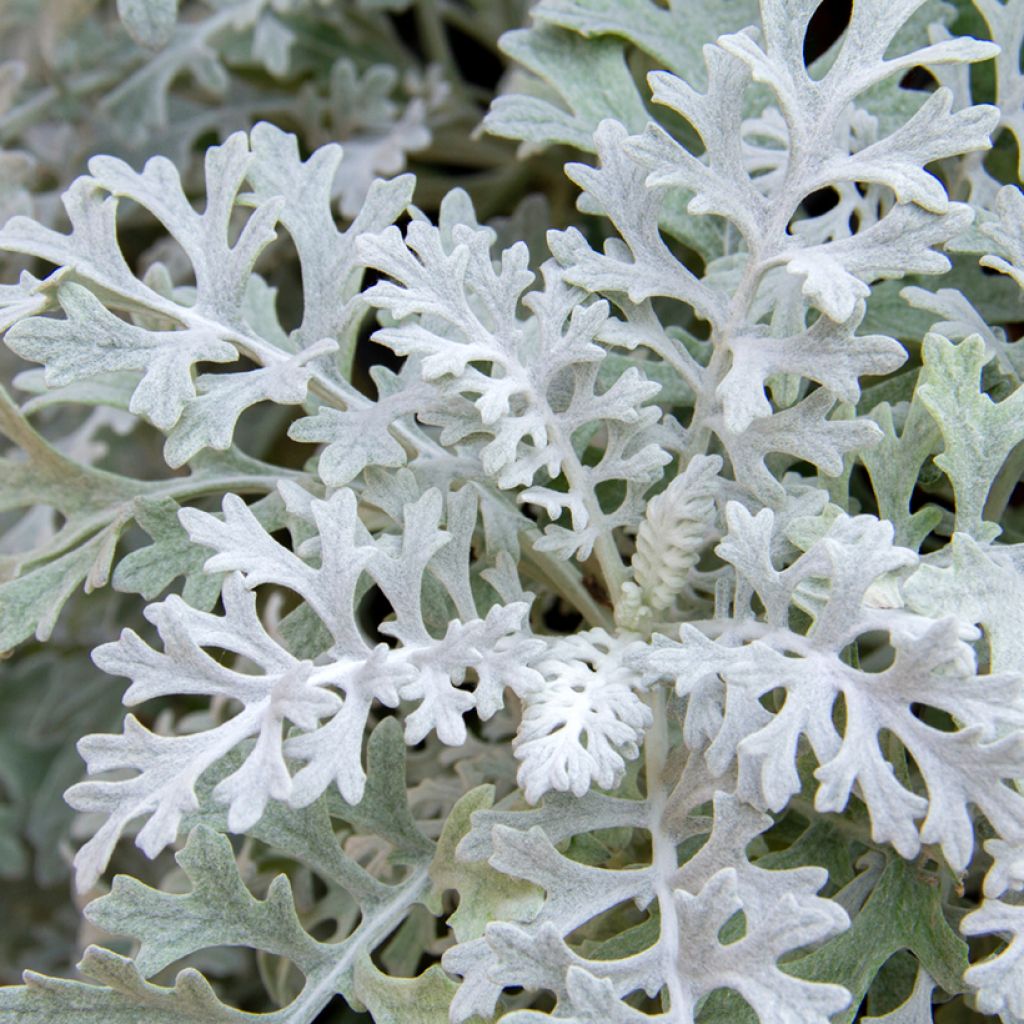

Senecio cineraria Silver Dust
Senecio cineraria Silver Dust
Senecio cineraria Silver Dust
Dusty Miller, Silver Ragwort
Despite a quality control of my order, I was given agapanthus seeds instead of cineraria seeds, which is why I had ordered on the website.
Matthieu H., 06/01/2018
Special offer!
Receive a €20 voucher for any order over €90 (excluding delivery costs, credit notes, and plastic-free options)!
1- Add your favorite plants to your cart.
2- Once you have reached €90, confirm your order (you can even choose the delivery date!).
3- As soon as your order is shipped, you will receive an email containing your voucher code, valid for 3 months (90 days).
Your voucher is unique and can only be used once, for any order with a minimum value of €20, excluding delivery costs.
Can be combined with other current offers, non-divisible and non-refundable.
Home or relay delivery (depending on size and destination)
Schedule delivery date,
and select date in basket
This plant carries a 6 months recovery warranty
More information
We guarantee the quality of our plants for a full growing cycle, and will replace at our expense any plant that fails to recover under normal climatic and planting conditions.
Would this plant suit my garden?
Set up your Plantfit profile →
Description
Silver Ragwort Silver Dust is a persistent shrub-like plant, cultivated as an annual for its decorative, cut, and silvery foliage.
Silver Ragwort belongs to the Asteraceae family and is known by many synonyms: Senecio maritimus, Senecio candicans, Cineraria maritima and Senecio bicolor ssp. cineraria.
Native to the Mediterranean basin, Senecio cineraria likes warm and sunny exposures as well as mild winters. It does not withstand temperatures below 5 °C (41 °F) but tolerates maritime climates and sea spray well.
Senecio cineraria Silver Dust is a small bushy shrub that grows to a height of 25 to 30 cm (9.8 to 11.8 in) with a similar width. Its leaves, 10 to 15 cm (3.9 to 5.9 in) long, are lanceolate or ovate and deeply cut, resembling oak leaves. The epidermis is velvety and particularly silvery white, hence the choice of this name: Silver Dust.
Although it has little appeal in terms of its foliage, it is worth noting the appearance of yellow flowers in July-August. These are 2 to 3 cm (0.8 to 1.2 in) heads carried in trailing corymbs.
Silver Ragwort Silver Dust is used for the significant contrast it can create among beds of perennial or annual plants with vibrant colours. It has long been used in mosaic gardening. Planted along borders, it highlights beds and clearly defines short grass meadows. Finally, in pots and containers, it pairs well with the colourful foliage of purple Coleus and miniature Dahlias.
Report an error about the product description
Senecio cineraria Silver Dust in pictures
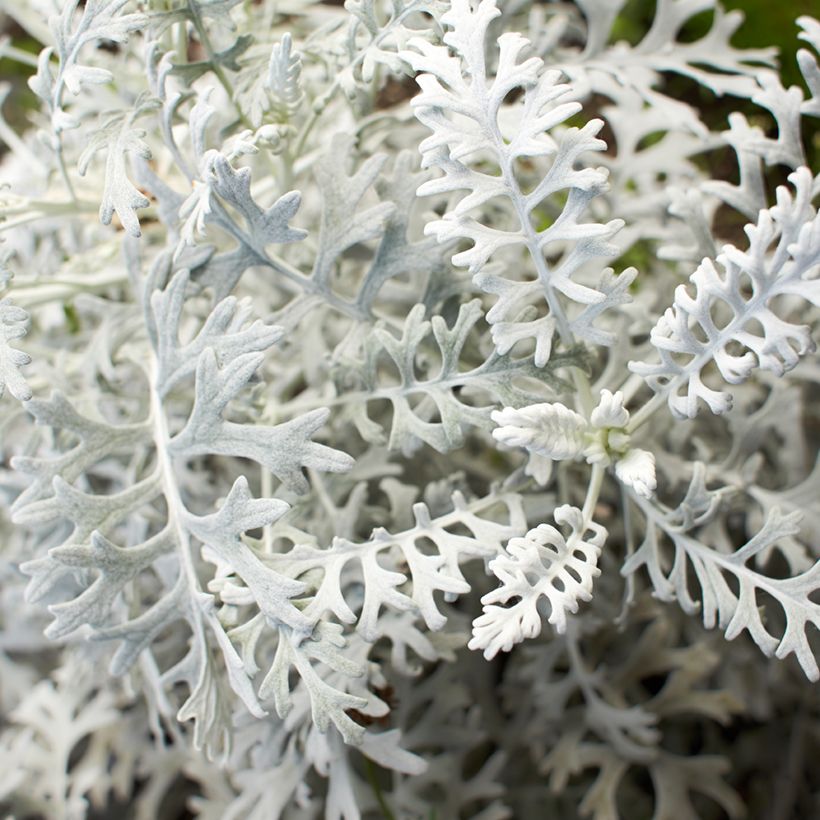

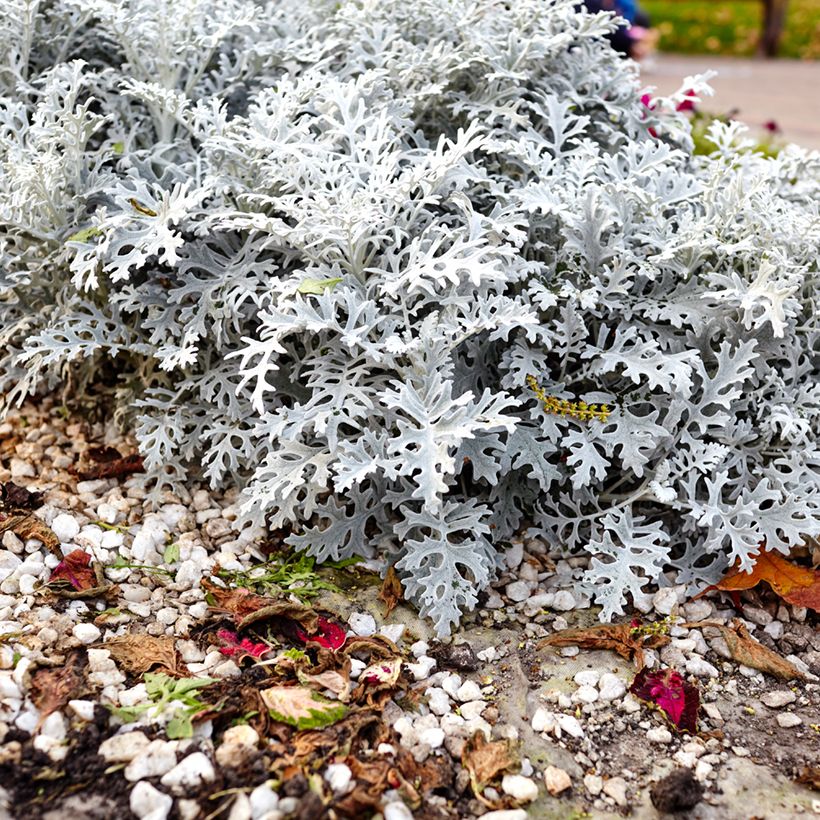

Flowering
Foliage
Plant habit
Botanical data
Senecio
cineraria
Silver Dust
Asteraceae
Dusty Miller, Silver Ragwort
Mediterranean
Other Senecio
View all →Planting and care
Sow Silver Ragwort Silver Dust from February to March in a tray. Use good-quality compost that you will sift over the surface to bind the seed to its substrate. Before sowing, lightly press the compost down using a board. Sow your seeds by broadcasting. Cover the seeds by sprinkling compost or vermiculite on top, lightly press, and water generously with a fine rain. Place your tray in light, avoiding direct sunlight, at a temperature of 18 °C (64.4 °F) to 24 °C (75.2 °F).
The seeds will germinate in 10 to 21 days. As soon as the plants are manageable, transplant them into 7 cm (2.8 in) buckets. Keep the compost moist but not excessively during growth. Then, 15 days before their final placement, start gradually acclimatising them to a temperature of 15 °C (59 °F).
By the end of May or the beginning of June, the temperature will be warm enough in the garden to plant your young plants. Choose a sunny location, add a good scoop of compost to each planting hole, and space your plants 30 cm (11.8 in) apart.
If you wish to keep your Sea Ragworts for the following year, remember to protect them from severe frost or bring them indoors into a frost-free greenhouse or conservatory.
Sowing period
Intended location
Planting & care advice
-
, onOrder confirmed
Reply from on Promesse de fleurs
Haven't found what you were looking for?
Hardiness is the lowest winter temperature a plant can endure without suffering serious damage or even dying. However, hardiness is affected by location (a sheltered area, such as a patio), protection (winter cover) and soil type (hardiness is improved by well-drained soil).

Photo Sharing Terms & Conditions
In order to encourage gardeners to interact and share their experiences, Promesse de fleurs offers various media enabling content to be uploaded onto its Site - in particular via the ‘Photo sharing’ module.
The User agrees to refrain from:
- Posting any content that is illegal, prejudicial, insulting, racist, inciteful to hatred, revisionist, contrary to public decency, that infringes on privacy or on the privacy rights of third parties, in particular the publicity rights of persons and goods, intellectual property rights, or the right to privacy.
- Submitting content on behalf of a third party;
- Impersonate the identity of a third party and/or publish any personal information about a third party;
In general, the User undertakes to refrain from any unethical behaviour.
All Content (in particular text, comments, files, images, photos, videos, creative works, etc.), which may be subject to property or intellectual property rights, image or other private rights, shall remain the property of the User, subject to the limited rights granted by the terms of the licence granted by Promesse de fleurs as stated below. Users are at liberty to publish or not to publish such Content on the Site, notably via the ‘Photo Sharing’ facility, and accept that this Content shall be made public and freely accessible, notably on the Internet.
Users further acknowledge, undertake to have ,and guarantee that they hold all necessary rights and permissions to publish such material on the Site, in particular with regard to the legislation in force pertaining to any privacy, property, intellectual property, image, or contractual rights, or rights of any other nature. By publishing such Content on the Site, Users acknowledge accepting full liability as publishers of the Content within the meaning of the law, and grant Promesse de fleurs, free of charge, an inclusive, worldwide licence for the said Content for the entire duration of its publication, including all reproduction, representation, up/downloading, displaying, performing, transmission, and storage rights.
Users also grant permission for their name to be linked to the Content and accept that this link may not always be made available.
By engaging in posting material, Users consent to their Content becoming automatically accessible on the Internet, in particular on other sites and/or blogs and/or web pages of the Promesse de fleurs site, including in particular social pages and the Promesse de fleurs catalogue.
Users may secure the removal of entrusted content free of charge by issuing a simple request via our contact form.
The flowering period indicated on our website applies to countries and regions located in USDA zone 8 (France, the United Kingdom, Ireland, the Netherlands, etc.)
It will vary according to where you live:
- In zones 9 to 10 (Italy, Spain, Greece, etc.), flowering will occur about 2 to 4 weeks earlier.
- In zones 6 to 7 (Germany, Poland, Slovenia, and lower mountainous regions), flowering will be delayed by 2 to 3 weeks.
- In zone 5 (Central Europe, Scandinavia), blooming will be delayed by 3 to 5 weeks.
In temperate climates, pruning of spring-flowering shrubs (forsythia, spireas, etc.) should be done just after flowering.
Pruning of summer-flowering shrubs (Indian Lilac, Perovskia, etc.) can be done in winter or spring.
In cold regions as well as with frost-sensitive plants, avoid pruning too early when severe frosts may still occur.
The planting period indicated on our website applies to countries and regions located in USDA zone 8 (France, United Kingdom, Ireland, Netherlands).
It will vary according to where you live:
- In Mediterranean zones (Marseille, Madrid, Milan, etc.), autumn and winter are the best planting periods.
- In continental zones (Strasbourg, Munich, Vienna, etc.), delay planting by 2 to 3 weeks in spring and bring it forward by 2 to 4 weeks in autumn.
- In mountainous regions (the Alps, Pyrenees, Carpathians, etc.), it is best to plant in late spring (May-June) or late summer (August-September).
The harvesting period indicated on our website applies to countries and regions in USDA zone 8 (France, England, Ireland, the Netherlands).
In colder areas (Scandinavia, Poland, Austria...) fruit and vegetable harvests are likely to be delayed by 3-4 weeks.
In warmer areas (Italy, Spain, Greece, etc.), harvesting will probably take place earlier, depending on weather conditions.
The sowing periods indicated on our website apply to countries and regions within USDA Zone 8 (France, UK, Ireland, Netherlands).
In colder areas (Scandinavia, Poland, Austria...), delay any outdoor sowing by 3-4 weeks, or sow under glass.
In warmer climes (Italy, Spain, Greece, etc.), bring outdoor sowing forward by a few weeks.






























